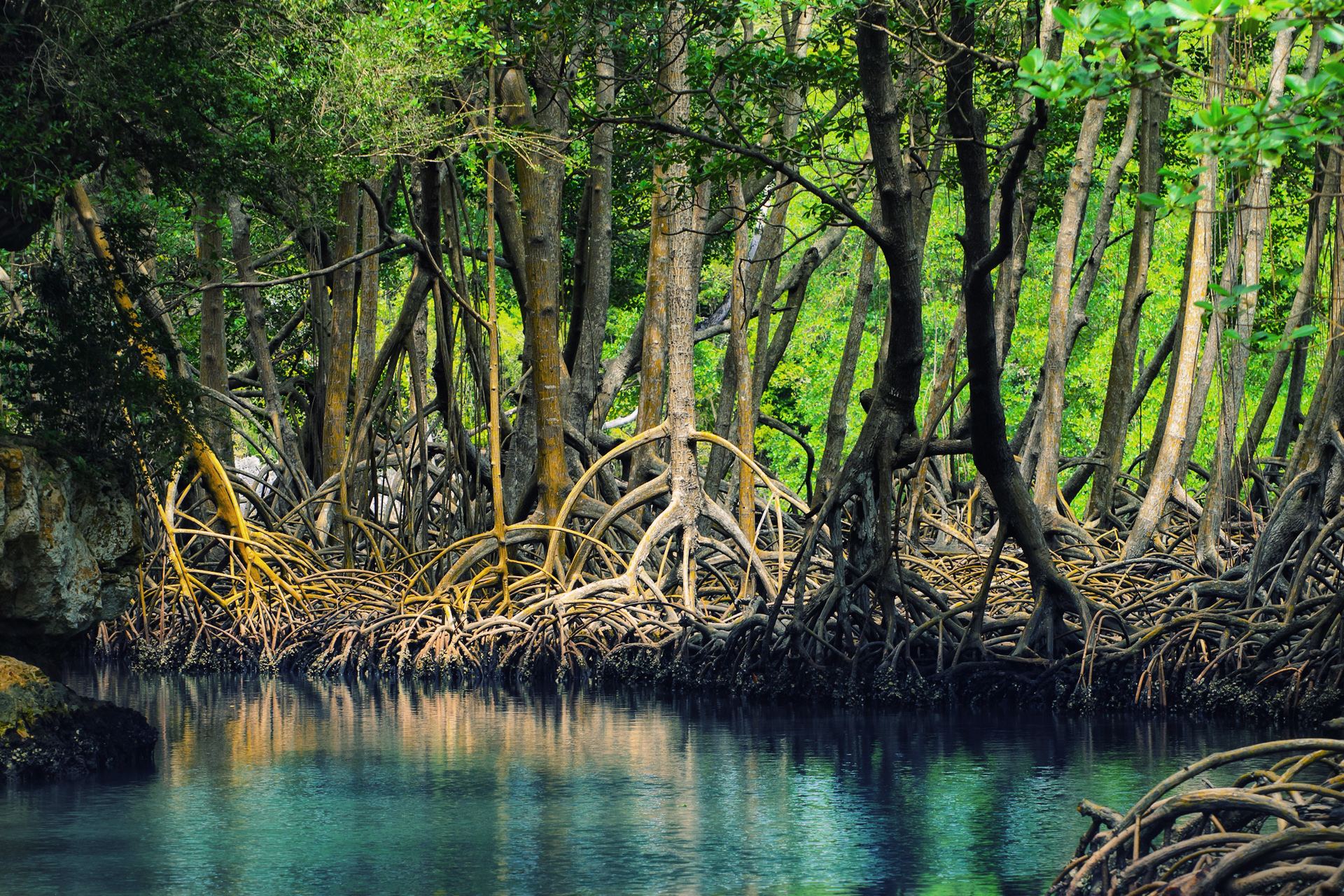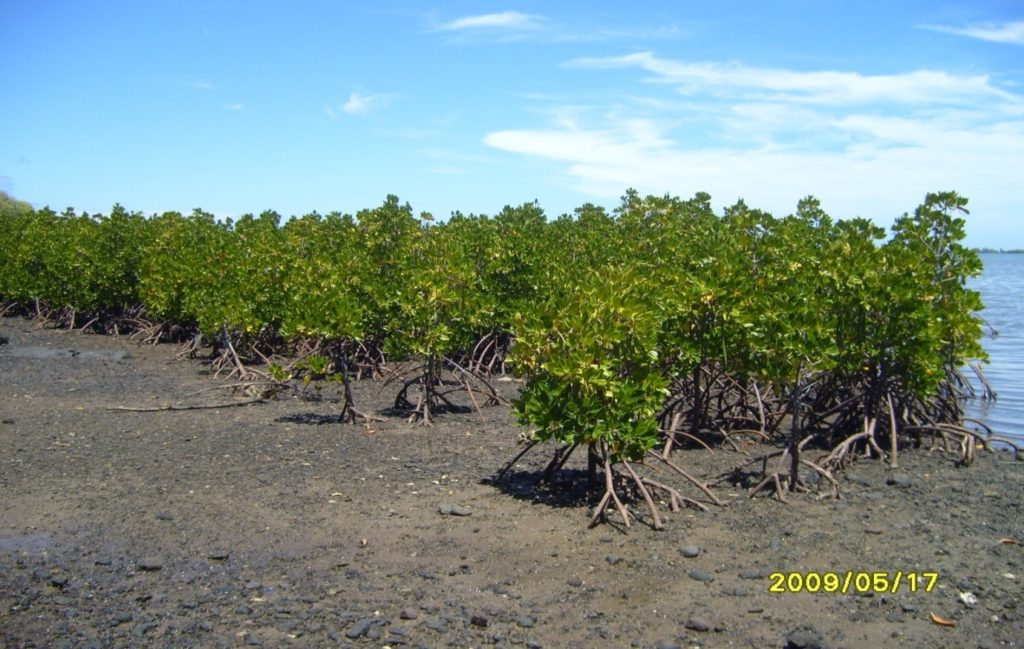Mangroves of Mauritius

What is a mangrove?
Duke, 1992, defined a mangrove as a “tree, shrub, palm or ground fern, generally exceeding more than half a meter in height, and which normally grows above mean sea level in the intertidal zones of marine coastal environments or estuarine margins”. Mangroves are those trees that grow in the transitional area between the land and the sea on the coast of the island. They can be easily distinguished from other plants by their aerial roots.
The term mangrove can either refer to the individual plants or the ecosystem [1]. Mangrove ecosystems have been called mangals so as to differentiate them from the different plant species [2]. Mangals (the trees and their associated fauna) are also known as “tidal forests”, “coastal woodlands” and “oceanic rainforests”.
Types of mangroves in Mauritius
There are two types of mangroves in Mauritius. These mangroves are known to originate from Polynesia and West Africa [3]. They are called manglier, palétuvier, plantes à échasses and manglier gros poumon. Two main species of mangroves exist; Rhizophora mucronata and Bruguiera gymnorrhiza. They are called the Red Mangroves due to the colour of their barks.
Mangroves used to be distributed all over the island but deforestation for hotel construction has left narrow belts in the North and in the West and thicker zones of trees on the Eastern coast. In 2003, mangrove cover was estimated to be around 2000 ha in Mauritius [4].

Rhizophora is the dominant species and can be found in most of the forests. On the other hand, Bruguiera is not as common and has been seen in few areas such as at Pointe Lafayette, Ferney, Trou d’eau Douce and Mahebourg [5].
How do mangroves look like?
Rhizophora have long, twisted, stilt roots whereas Brugueira have shorter prop roots. The Rhizophora trees do not exceed 3 metres in height and can be recognised by their reddish bark. They have simple twin leaves which are oval in shape with a leathery appearance. They produce white flowers and the fruit (the propagule), is oval and elongated; it starts to grow on the tree itself until it falls to the ground and becomes a new plant. The roots of the plant are used to treat diabetes while the leaves can be used to cure fever [3].
Importance of mangroves in Mauritius
Mangrove forests over the world are big and home to many organisms such as tigers, eagles, turtles, alligators and crocodiles. In Mauritius however, the mangroves provide habitats mostly for insects, small rodents and birds. Also, most of the ocean fishes breed in the mangrove sediment and develop in there during the juvenile stages. Crabs also thrive in mangals and adventure out of their holes during low tides. This is another source of food and income to people living on the coast.
Mangroves also help to protect the shore against strong surges, waves and tsunamis. The roots trap sediment and prevent soil from flowing into the sea which would otherwise prevent polyp formation upstream. The sediment is known to be a carbon sink and also acts as a filter to remove pollutants from runoff.
References:
- Tomlinson, P.B. (1986). The botany of mangroves. Cambridge University Press, Cambridge.
- Macnae, W. (1968). A general account of a fauna and flora of mangrove swamps and forest in the Indo-Pacific region. Advances in Marine Biology. Vol 6: 73-270.
- Gurib-Fakim, A. (2015). Mieux connaitre les arbres et arbustres de Maurice et de l’ocean indien, Volume 1. Centre de Phytothérapie et de Recherche, pp 107
- Appadoo, C. (2003). Status of mangroves in Mauritius. Journal of Coastal Development. Vol 7:1, pp 1-4
- Jagtap, T.G. (1993). Studies on littoral and sub littoral macrophytes around the Mauritius coast. ATOLL research bulletin. National Museum of natural history, Smithsonian Institution, Washington, D.C., USA. No. 382.

Pingback: Sustainable tourism in Mauritius - Yo Nature
Pingback: Wetlands of Mauritius: Importance and Ramsar Sites - Yo Nature
Pingback: How Mauritius, a Small Island Developing State, is adapting to sea level rise - Yo Nature
Pingback: Offshore islets of Mauritius: National Parks and Nature Reserves - Yo Nature
Pingback: Coral reefs of Mauritius - Yo Nature
Pingback: Why islands must protect their mangrove forests - Yo Nature